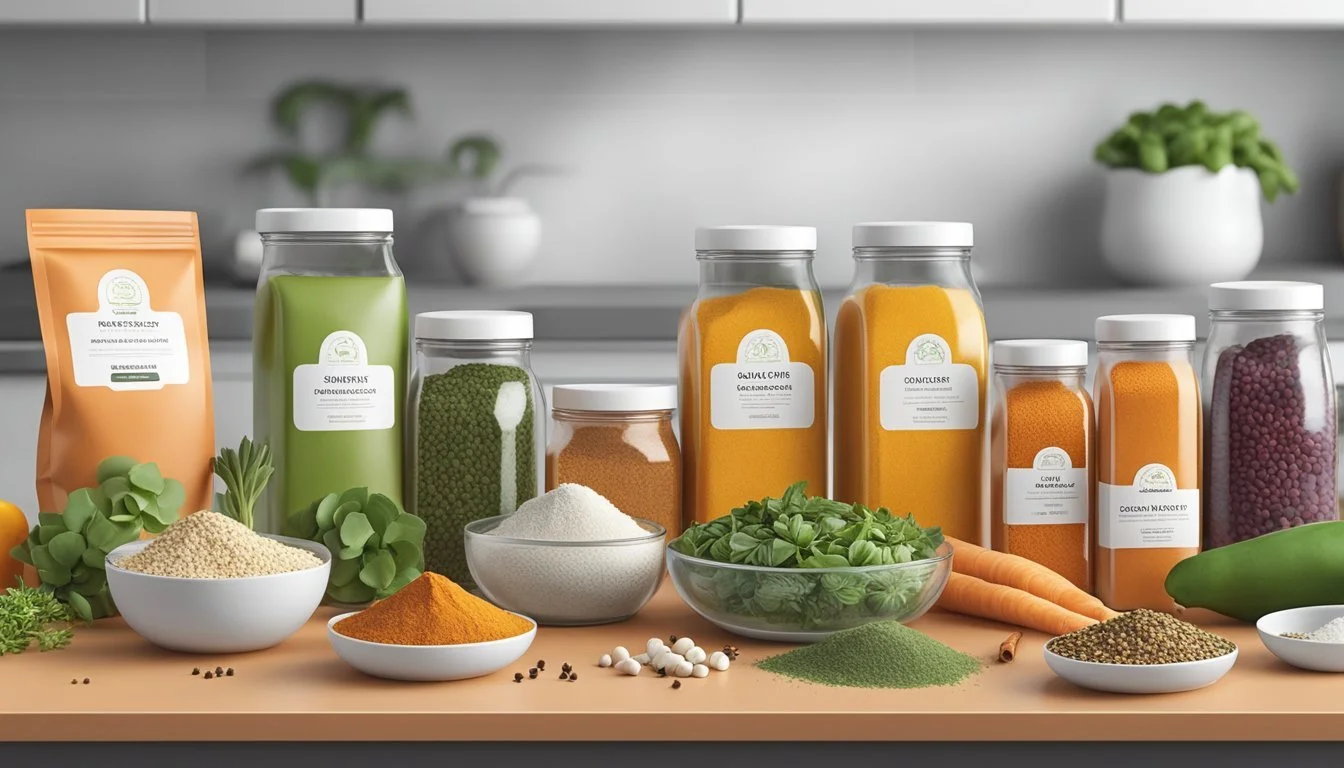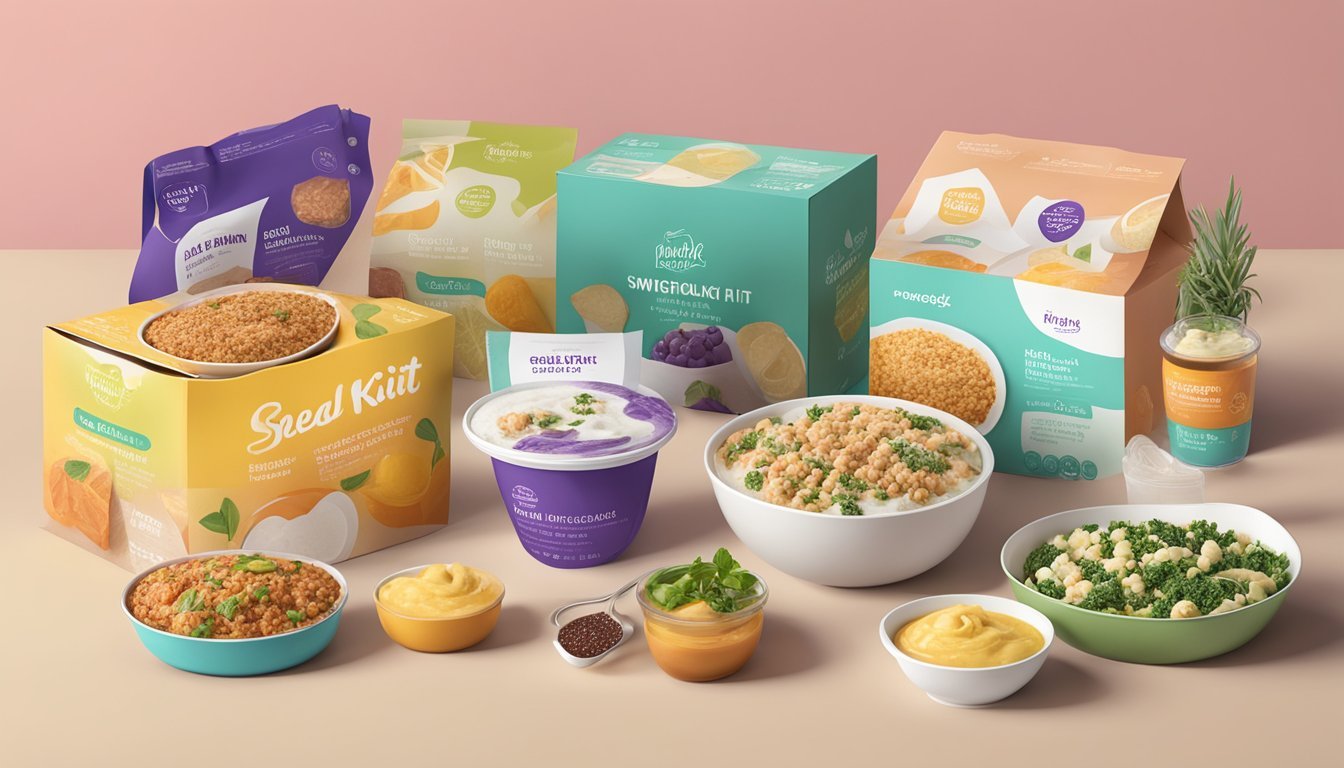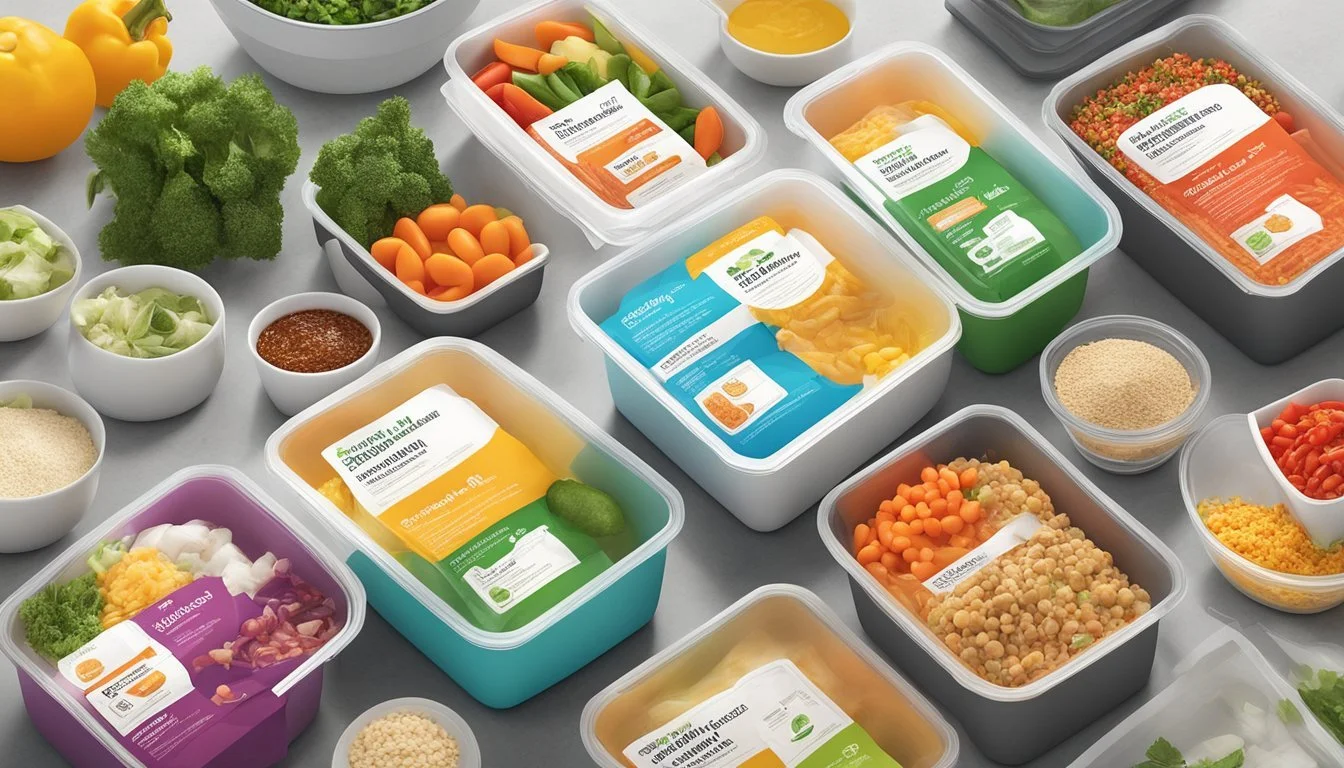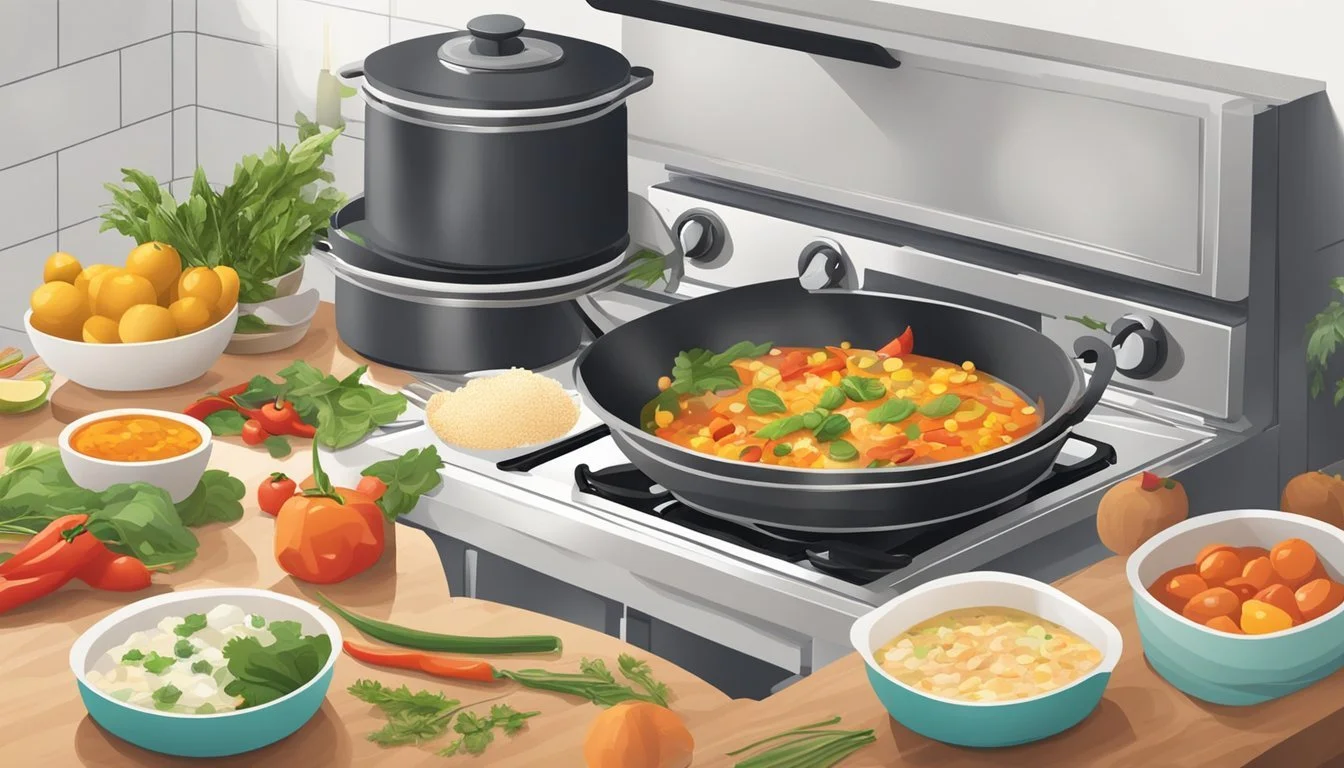Swicy Meal Kits
Unbiased Analysis of the Trendy Sweet-Spicy Culinary Trend
The intersection of sweet and spicy flavors, colloquially termed 'Swicy', is a culinary trend that continues to capture the taste buds of consumers worldwide. Anchored in the dynamic pairing of sugary and fiery profiles, Swicy meal kits have emerged as a popular solution for food enthusiasts seeking to explore this taste sensation at home. These pre-packaged cooking options provide a convenient way to enjoy the contrasting but complementary flavors that have become a staple in many cuisines.
In the current landscape of meal delivery services, Swicy meal kits are carving out a niche for themselves. Offering an array of dishes that combine the heat of spices with the subtlety of sweet undertones, these kits cater to a growing demand for multifaceted flavor experiences. From Korean eggs with a sweet chili glaze to chicken thighs (What wine goes well with chicken thighs?) rubbed with a honey-spice mix, the choices are as diverse as they are appealing.
With a surge in popularity, Swicy meal kits are not just a fleeting food fad but a reflection of evolving consumer preferences. Providing comprehensive and valuable information through a review of these meal kits offers an opportunity to gauge their place in the culinary scene. This content aims to deliver authoritative and relevant insights, ensuring that readers are well-informed about what to expect from these innovative cooking options.
The Appeal of Sweet and Spicy Flavors
The interplay between sweet and spicy flavors has resonated across cuisines, drawing in consumers with its complex taste profile that both comforts and excites the palate.
Cultural Significance of Sweet-Spicy Cuisine
Cuisines around the world have long celebrated the harmonious blend of sweet and spicy flavors. Ingredients like ginger and honey are staples in Asian cooking, often paired with the heat from chili paste or fresh peppers to create dishes that have depth and a burst of flavor. The addition of sweetness to spicy elements tempers the heat, allowing a wider range of palates to enjoy dishes that might otherwise be too intense.
Benefits of Sweet and Spicy Combinations
Balanced Flavor: The combination of sweet and spicy flavors works to create a more balanced and rounded taste experience. Sweetness can offset potential bitterness or acidity in spicy components, leading to a more delicious and palatable dish.
Enhanced Satisfaction: Consuming spicy ingredients triggers endorphins, the body's natural feel-good chemicals. When these are coupled with the comfort provided by sweet flavors, the result is a satisfying sensory experience that enhances enjoyment.
Versatility in Cooking: Sweet and spicy ingredients can be used in a variety of dishes, from savory meals to desserts, demonstrating their flexibility. The use of honey, for example, is not just limited to sweetening; it can also act as a glaze or marinade in conjunction with spices.
Health Benefits: Many ingredients that contribute to sweet and spicy profiles, like ginger and peppers, offer potential health benefits, including anti-inflammatory properties and metabolism-boosting effects.
By understanding the appeal of sweet and spicy flavors, food enthusiasts can better appreciate the skillful combination of these taste sensations in pre-packaged meal kits designed to provide both comfort and excitement in every bite.
Exploring Swicy Meal Kit Options
Swicy meal kits cater to those seeking the vibrant harmony of sweet and spicy flavors in home-cooked meals. These kits provide a variety of pre-measured ingredients and recipes designed for ease and flavor.
Assessing Variety and Versatility
Swicy meal kits come with a diverse array of options, ensuring that there is something palatable for every taste preference. One can expect kits tailored around chicken as a protein staple, adept at taking on the swicy profile with recipes incorporating a glaze of sweet honey and fiery pepper. For vegetarians, options abound with veggie-centric kits featuring ingredients like bell peppers (What wine goes well with bell peppers?) and squashes, which are elevated with swicy sauces that might blend fruit-based sweetness with a kick from chili peppers.
Chicken-Based Kits: Often include a mix of soy and sweet chili sauces.
Veggie Kits: Typically feature coconut aminos for a sweet touch without the soy.
Sourcing and Quality of Ingredients
The success of a swicy meal kit hinges on the freshness and quality of its ingredients. Providers prioritize sourcing high-grade, often organic, produce and meats. Ingredients such as pepper, essential for the 'icy' aspect, and sweeteners like honey or, in more health-conscious offerings, coconut aminos, are selected with care to achieve the perfect sweet-spicy balance.
Peppers: Range from mild to hot, tailored to personal heat tolerance.
Coconut Aminos: Utilized as a healthier, gluten-free alternative to soy sauce.
Meal kits featuring swicy recipes focus not just on taste but also aim to offer a convenient and high-quality culinary experience. The use of both traditional and innovative ingredients in these meal kits provides home chefs with the ability to explore new flavor landscapes while trusting the caliber of the food they prepare.
Health and Nutrition
Swicy Meal Kits prioritize health and nutrition by carefully balancing the sweet and spicy flavors with the dietary needs of their customers. They ensure that each meal is a nutritional powerhouse with a keen eye on caloric content and macronutrient distribution, while also accommodating a range of dietary restrictions and allergen concerns.
Caloric and Macronutrient Content
Swicy Meal Kits are designed to cater to a healthy lifestyle, providing detailed nutritional information for every offering. Each meal kit generally contains 400-600 calories per serving, with a balanced distribution of macronutrients:
Protein: Approximately 20-30%
Carbohydrates: About 40-50%, with a focus on complex carbs
Fats: Mostly unsaturated, constituting 20-30% of the total caloric intake
Meals are crafted to support energy needs while encouraging lean body mass maintenance and growth.
Allergens and Dietary Restrictions
Swicy Meal Kits take allergens seriously, offering a variety of options to meet customers' specific dietary needs:
Gluten-Free: Many kits are completely devoid of gluten-containing ingredients.
Paleo: Selections of kits adhere to paleo dietary guidelines, avoiding grains, dairy, and processed foods.
Soy, Milk, Egg, Fish, Shellfish, Tree Nuts: Clear labeling is provided, with alternative options available for individuals with allergies to these items.
Meals are prepared in a facility that handles common allergens with strict cross-contamination protocols to ensure the safety of customers with sensitivities.
Preparation and Cooking Experience
Swicy Meal Kits cater to those seeking a balance of sweetness and spice in their meals. They offer a structured cooking journey with emphasis on convenience and distinct flavors.
Ease of Meal Prep and Cooking Time
Swicy Meal Kits are engineered for efficiency, aiming to streamline the meal prep process. With preparations taking no longer than 30 minutes, they present an appealing option for fast yet flavorful easy dinners. Detailed below is a summary of the meal prep process:
Unboxing: Each meal comes pre-portioned, which means less time spent measuring ingredients.
Prep Work: Minimal chopping and dicing are required, as most ingredients arrive pre-prepped.
Cooking Process: The majority of meals require simple cooking techniques, such as sautéing or baking, with water or oil as the primary cooking mediums.
Step-by-Step Instructions & Cooking Tips
Every kit comes with a comprehensive recipe guide akin to a concise cookbook, ensuring cooks of any skill level can follow along with ease. These guides contribute significantly to the appeal of Swicy Meal Kits:
Clarity: Instructions are clear and methodical, leaving little room for error.
Cooking Tips: Handy tips are included to guarantee an optimal culinary result, from the consistency of the sauce to the doneness of proteins.
By following these guides, cooks can enjoy the journey from raw ingredients to a delicious, sweet-spicy meal, gaining both confidence and knowledge in the kitchen.
Evaluating Meal Kit Ingredients
The quality and variety of ingredients can make or break the Swicy Meal Kit experience. Focusing on the proteins, vegetable selection, and the signature seasonings, this section meticulously examines what goes into these kits.
Proteins: From Tofu to Chicken
Swicy Meal Kits cater to various protein preferences by including both animal-based and plant-based options. Chicken typically features prominently, with options like succulent chicken breast (What wine goes well with chicken breast?) and flavorful chicken thighs providing a substantial base for the meals. For those who favor a vegetarian lifestyle or simply enjoy a meatless meal, firm tofu acts as a versatile protein, seamlessly absorbing the sweet-spicy blends of sauces.
Chicken:
Breast: lean, tender
Thighs: richer, holds more moisture
Tofu:
Texture: firm, holds shape well
Flavor: mild, absorbs sauces
Vegetable Selection and Freshness
Every Swicy Meal Kit comes with an assortment of fresh vegetables that add texture and nutritional value to each dish. Ingredients like crisp bell peppers, fresh green beans, and tender broccoli provide a colorful crunch. Root vegetables such as carrots complement the spicy hints with their inherent sweetness. Cauliflower rice and zucchini spirals can also serve as low-carb alternatives to staples like rice or noodles, catering to diverse dietary preferences.
Vegetables:
Crunchy: bell peppers, carrots
Colorful: red bell pepper, green onions
Low-carb: cauliflower, zucchini
Seasonings and Special Sauces
The distinct sweet and spicy profiles come alive thanks to carefully crafted seasonings and sauces. Ground ginger and black pepper lay down the fundamental spice notes, while hot sauce and sesame oil introduce a complex heat and nutty depth. Swicy's special blend often features tamari for umami and cornstarch to achieve the perfect sauce consistency that clings to the likes of cucumber, mushroom, and proteins alike. Non-traditional ingredients such as peanuts may also be included to add a contrasting texture and flavor to the meals.
Seasonings:
Spices: ground ginger, black pepper
Texturizers: cornstarch
Sauces:
Base flavors: tamari, sesame oil
Heat sources: hot sauce
Diverse Recipes and Culinary Techniques
The integration of swicy elements into meal kits brings a vibrant array of flavors and introduces home cooks to a variety of cooking methods. From stir-fries that artfully balance heat and sweetness to global dishes that expand the culinary repertoire, these kits make bold seasoning accessible and enjoyable.
Stir Fry Mastery: Techniques and Recipes
Stir frying is a quick and efficient cooking technique that preserves the fresh flavors and textures of ingredients. One can achieve a swicy profile in a stir fry by incorporating key elements like fresh ginger and green onions to infuse aromatic depth, while a mix of brown sugar and cayenne adds a contrasting sweet-heat dimension. A popular chicken stir fry recipe might include:
Protein: Chicken, thinly sliced for rapid cooking
Vegetables: Green onions (or scallions), bell peppers, snap peas
Swicy Sauce:
2 tbsp low sodium soy sauce
1 tbsp brown sugar
1/2 tsp cayenne (adjust to taste)
1 tsp grated fresh ginger
Using a hot frying pan, cooks should sear the chicken and vegetables in quick succession, adding the swicy sauce near the end to glaze ingredients with a saucy sheen.
Expanding Your Palate with Global Dishes
Swicy flavors are not limited to stir-frying; they traverse the globe. A swicy couscous (What wine goes well with couscous?) dish, for instance, might blend sweet raisins with spicy harissa—a celebration of North African flavors. A sheet pan creation layers ingredients to roast simultaneously, creating a savory swicy profile with minimal effort. An example recipe may include:
Base: Couscous, cooked fluffy and light
Roasted Mix:
Butternut squash cubes and red onions
Drizzle of olive oil, sprinkle of salt, and a dash of cayenne
Toppings:
Fried egg for added richness
A scattering of scallions to finish
These dishes demonstrate how swicy meal kits serve as a culinary bridge between simple home cooking and gourmet flavors.
Packaging and Environmental Sustainability
Swicy Meal Kits prioritize environmentally sustainable practices in their packaging and preparation processes, aiming to minimize impact on the planet while providing customers with a convenient cooking experience.
Recyclable and Eco-Friendly Packaging Options
Swicy Meal Kits uses packaging that is biodegradable, compostable, or recyclable. Specifically, they incorporate materials that have already been through the recycling process and are capable of being recycled yet again. This approach supports a circular economy, reducing the reliance on virgin materials and the brand's overall carbon footprint. The following table summarizes the packaging components:
Component Material Used Sustainability Feature Outer box Recycled cardboard 100% recyclable Insulation Biodegradable plant-based foam Composts in 90 days Meal bags Recyclable plastic Reusable before recycling Ice packs Non-toxic gel Drains safely; Recyclable bag
Minimizing Food Waste with Pre-portioned Ingredients
Swicy Meal Kits' meal prep process involves precisely portioned ingredients that ensure there are virtually no leftovers. This pre-portioning system is an effective strategy to reduce food waste at the consumer level. Additionally, the facilities where the meal kits are assembled operate with efficiency in mind, carefully managing inventory to make sure ingredients are used before they spoil, further trimming waste throughout the production process.
By streamlining the meal-prep process and providing exactly what is needed, Swicy not only makes cooking more manageable but also reduces the environmental impact associated with household food waste.
Customer Service and Support
Swicy Meal Kits places a strong emphasis on customer satisfaction, ensuring reliable service and clear communication channels for all users. They prioritize efficient resolution of concerns and value customer feedback, which is evident in their service structure.
Navigating Customer Reviews and Ratings
Customers can express their views through a dedicated feedback system, which Swicy Meal Kits uses to inform their continuous improvement process. They display a transparent rating system on their website, showcasing both positive and negative reviews which can instill confidence in new buyers. The company provides:
User-Friendly Interface: Easy-to-navigate platform for reviews
Feedback Consistency: Regularly updated testimonials
Access to Customer Support and FAQs
Swicy Meal Kits boast a robust support system, accessible via multiple platforms including email, phone, and live chat. Availability of support is as follows:
Email: 24-hour response time
Phone: Business hours from 8 AM to 8 PM
Live Chat: Instant assistance during peak hours
For common inquiries, they provide an extensive FAQ section that covers a broad range of topics with clarity and thoroughness. Highlights include:
Detailed preparation guides
Explanation of meal kit contents
Information on dietary options
Guidance on managing subscriptions
Meal Planning and Budget Considerations
When considering Swicy Meal Kits, budget and meal planning converge to offer convenience without sacrificing the balanced dance of sweet and spicy flavors.
Calculating Cost Per Serving
To assess whether Swicy Meal Kits align with one's budget, calculating the cost per serving is essential. For example, some meal kits begin at $4.99 per serving and may increase to $7.49, with additional shipping fees. Here is a simplified way to calculate the cost:
Total Weekly Cost: Multiply the cost per serving by the number of servings needed per meal, and then by the number of meals per week.
Cost Per Meal Breakdown:
2 people, 3 meals: $4.99 x 2 servings x 3 meals = $29.94 (excluding shipping)
4 people, 6 meals: $7.49 x 4 servings x 6 meals = $179.76 (excluding shipping)
Integrating Swicy Kits into Weekly Meal Plans
Integrating these kits into weekly meal plans requires foresight. Here is a strategy to seamlessly include Swicy Kits:
Monday: Swicy Chicken Taco
Wednesday: Swicy Glazed Salmon
Friday: Swicy BBQ Meatballs
To complement these Swicy Meal kits, shoppers might consider:
Preparing budget-friendly sides like rice or vegetables purchased in bulk
Reusing staple ingredients in multiple meals to reduce waste and cost
For a family of four, incorporating three Swicy Kits might look like this:
Day Meal Swicy Kit Used Monday Swicy Chicken Taco + Homemade Guacamole Yes Wednesday Swicy Glazed Salmon + Steamed Broccoli Yes Friday Swicy BBQ Meatballs + Mashed Potatoes Yes
Remaining days can be filled with meals designed to use up any additional bought ingredients, ensuring nothing goes unused while keeping the menu diverse and budget-friendly.
Conclusion
In reviewing pre-packaged "swicy" meal kits, they have emerged as a culinary trend offering a unique fusion of sweet and spicy flavors. These kits cater to a growing demand for convenience without compromising on the complexity of taste. Consumers find the sweet elements temper the heat, creating a balanced profile suited for diverse palates.
Taste Diversity: The blend of sugar and spice within these meal kits satisfies a niche in home cooking, bringing restaurant-level creativity to the kitchen.
Convenience: Pre-measured ingredients simplify the cooking process, making "swicy" flavors accessible to home chefs of varying skills.
Popularity: The increase in swicy menu items indicates a clear market trajectory favoring bold, hybrid tastes.
The market for sweet-spicy combinations continues to grow, with 'swicy' being a testament to the dynamic nature of contemporary cuisine. It appeals to those seeking to expand their culinary horizons. As more consumers lean towards adventurous eating experiences, "swicy" meal kits have become significant players in the meal prep industry.
Consumer feedback highlights appreciation for the ability to produce nuanced dishes with ease. These meal kits have anchored themselves in the market and their presence is expected to remain strong. The simplicity and versatility they offer ensure they cater to a wide audience, promising a solid future in the evolving food culture landscape.











